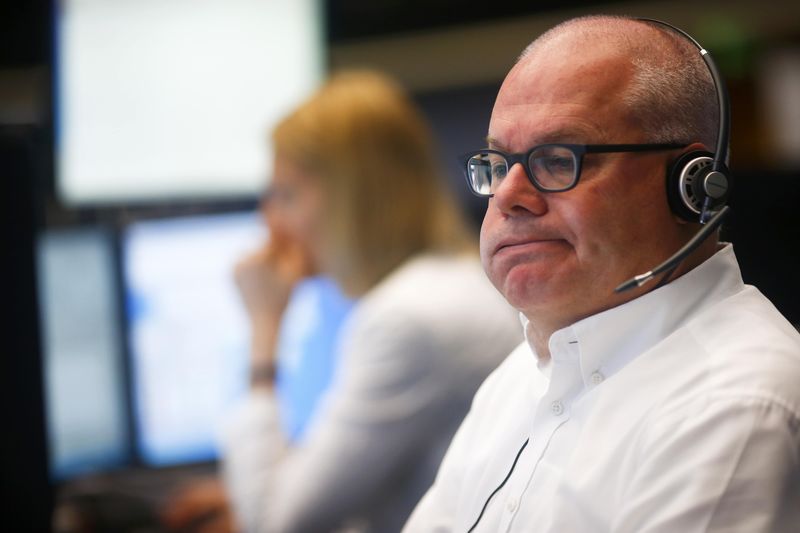* European stocks follow Asian markets higher
* Chinese imports fall but by less than expected
* Govt bond yields rise after blistering rally
* Graphic: World FX rates in 2019 http://tmsnrt.rs/2egbfVh
By Tommy Wilkes
LONDON, Aug 8 (Reuters) - Stock markets enjoyed a tentative recovery on Thursday after better-than-expected Chinese export data and a steadying of the yuan restored some calm to global markets.
European markets followed Asia higher in early trade, helped by data showing Chinese exports rose 3.3% in July from a year earlier, beating an expected decline of 2%. Chinese imports fell by less than forecast, despite the Sino-U.S. tariff struggle. moved on Monday to allow the yuan to weaken beyond 7 yuan per dollar, after U.S. President Donald Trump said he would impose more tariffs on Chinese imports. That sent markets into a tailspin.
Investors fear the trade conflict between the world's two biggest economies will cause a global recession. Bond markets have flashed red and a closely watched U.S. recession indicator reached its highest level since March 2007 Thursday, the pan-European Euro STOXX 600 .STOXX rose 0.87%. Germany's DAX .GDAXI was up 0.84% and France's CAC 40 .FCHI 1.03%.
The MSCI world equity index .MIWD00000PUS , which tracks shares in 47 countries, rose 0.25%. It remains down more than 3% since the start of August.
"There's a little bit of calm back in the market at the moment," said Peter Kinsella, global head of FX strategy at UBP. "But the ball is very much in Trump's court."
Wall Street recovered earlier losses on Wednesday and finished the day higher. E-Mini futures for the S&P 500 ESc1 gained 0.34%, suggesting it would build on that recovery on Thursday.
RECESSION FEARS Investors ran for the safety of bonds this week as fears of a recession grew.
Yields on U.S. 30-year bonds US30YT=RR fell as low as 2.123% overnight, not far from a record low of 2.089% set in 2016. Ten-year yields US10YT=RR dropped further below three-month rates, an inversion that has reliably predicted recessions in the past. US/
The latest spasm began when central banks in New Zealand, India and Thailand surprised markets on Wednesday with aggressive interest rate cuts markets are raising risks of recession," said JPMorgan (NYSE:JPM) economist Joseph Lupton. "Equities continue to slide and volatility has spiked, but the alarm bell is loudest in rates markets, where the yield curve inverted the most since just before the start of the financial crisis."
Markets have ramped up their expectations for more easing by the U.S. Federal Reserve, but the question remains how fast Fed policymakers will move.
Futures 0#FF: moved to price in a 100% probability of a Fed cut in September and a near 24% chance of a half-point cut. Some 75 basis points of easing is implied by January, with rates ultimately reaching 1%. FEDWATCH and U.S. government bond yields rose on Thursday, with German DE10YT=RR and French FR10YT=RR 10-year yields up from record lows after a rally in recent sessions. 10-year U.S. Treasury yield rose to 1.7155% US10YT=RR from as low as 1.595% on Wednesday.
Gold also benefited this week as investors scrambled to find somewhere safe to park their cash, rising above $1,500 for the first time since 2013. Spot gold XAU= was last at $1,498 per ounce, down from as much as $1,510 on Wednesday. Gold is up 16% since May. GOL/
In foreign exchange markets, the Japanese yen rose again, gaining 0.2% to 106.04 yen per dollar JPY=EBS . The yen tends to gain at times of uncertainty, and its rise this week underlined investor fears.
China's yuan also gained. In the offshore market it rose 0.2% to 7.07 yuan per dollar after touching as high as 7.14 yuan on Tuesday.
The dollar slipped, losing 0.2% against the euro to $1.1223 EUR=EBS .
Oil prices regained some ground amid talk that Saudi Arabia was weighing options to halt its decline, offsetting an increase in stockpiles and fears of slowing demand. O/R crude LCOc1 futures climbed $1.25 to $57.48, though that followed steep losses on Wednesday, U.S. crude CLc1 rose $1.46 to $52.53 a barrel.
